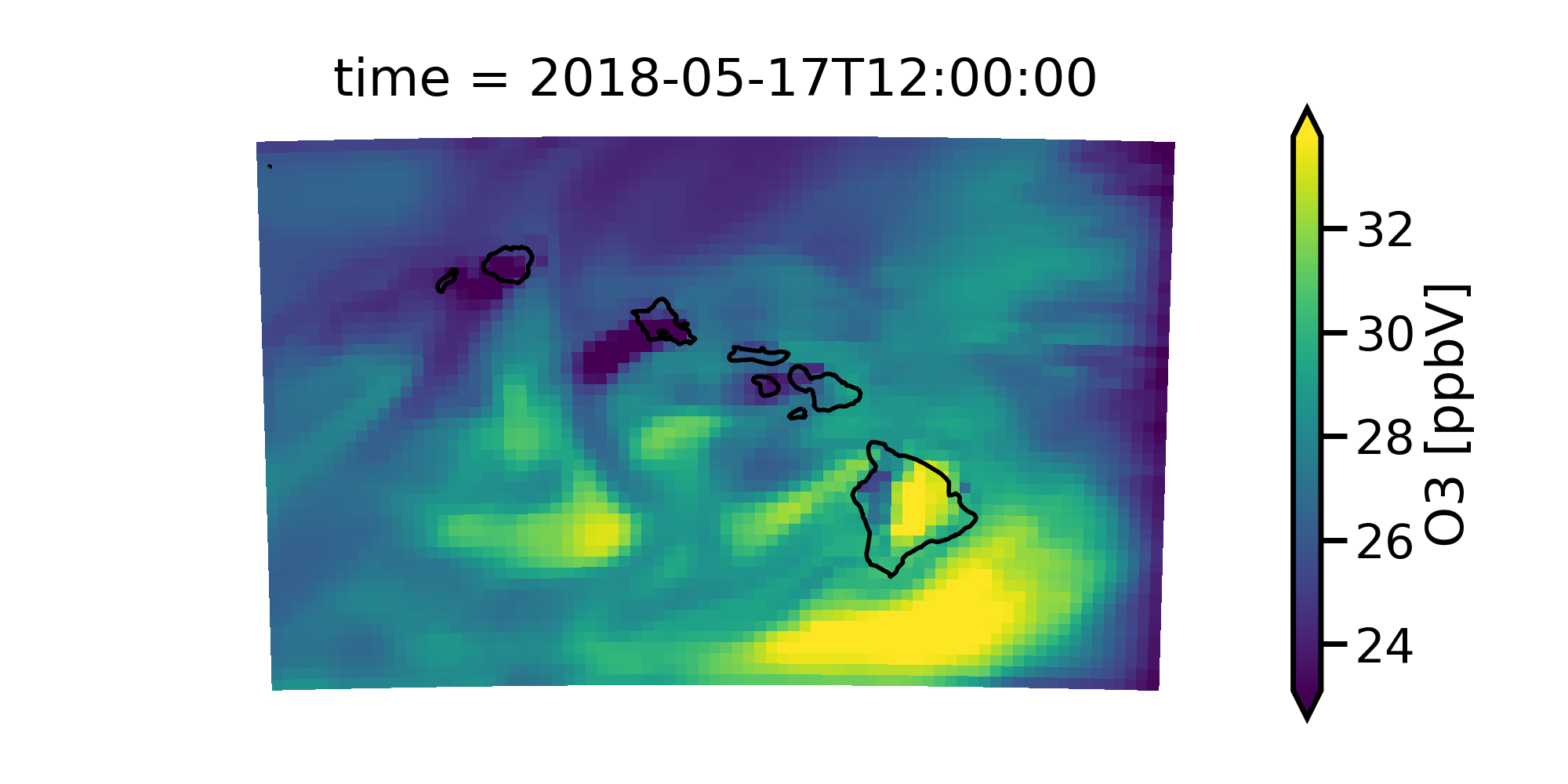MONET Xarray Accessor
MONET can add georeferencing tools to xarray’s data structures
through their accessor mechanism.
These tools can be
accessed via a special .monet attribute, available
for both xarray.DataArray and xarray.Dataset objects
after a simple import monet in your code.
Initializing the Accessor
All you have to do is import monet and xarray.
import monet
import xarray as xr
cmaqfile = monet.__path__ + '/../data/aqm.t12z.aconc.ncf'
from monet.models import cmaq
c = cmaq.open_dataset(cmaqfile)
c.O3[0,0,:,:].monet.quick_map()

Interpolation Methods
The MONET accessor provides several useful interpolation routines including:
getting the nearest point to a given latitude and longitude
interpolating to a constant latitude or longitude
interpolating to a vertical levels
remapping entire 2D
DataArrayorDataSet.
Find Nearest Point
To find the nearest latitude/longitude point you just need to use the
nearest_latlon() method. In this example we will continue to use the CMAQ
test file above. We will find the closest grid points to lat=20.5, lon=-157.4.
c.monet.nearest_latlon(lat=20.5,lon=-157.4)
<xarray.Dataset>
Dimensions: (time: 48, x: 1, y: 1, z: 1)
Coordinates:
* time (time) datetime64[ns] 2018-05-17T12:00:00 2018-05-17T13:00:00 ...
latitude (y, x) float64 dask.array<shape=(1, 1), chunksize=(1, 1)>
longitude (y, x) float64 dask.array<shape=(1, 1), chunksize=(1, 1)>
Dimensions without coordinates: x, y, z
Data variables:
O3 (time, z, y, x) float32 dask.array<shape=(48, 1, 1, 1), chunksize=(48, 1, 1, 1)>
Notice that the length of the dimensions are now (time: 48, x: 1, y: 1, z: 1).
If you wanted to only find the nearest location for a single variable you can
use the accessor on the DataArray.
c.O3.monet.nearest_latlon(lat=20.5,lon=-157.4)
<xarray.DataArray 'O3' (time: 48, z: 1, y: 1, x: 1)>
dask.array<shape=(48, 1, 1, 1), dtype=float32, chunksize=(48, 1, 1, 1)>
Coordinates:
* time (time) datetime64[ns] 2018-05-17T12:00:00 2018-05-17T13:00:00 ...
latitude (y, x) float64 dask.array<shape=(1, 1), chunksize=(1, 1)>
longitude (y, x) float64 dask.array<shape=(1, 1), chunksize=(1, 1)>
Dimensions without coordinates: z, y, x
Attributes:
long_name: O3
units: ppbV
var_desc: Variable O3
_FillValue: nan